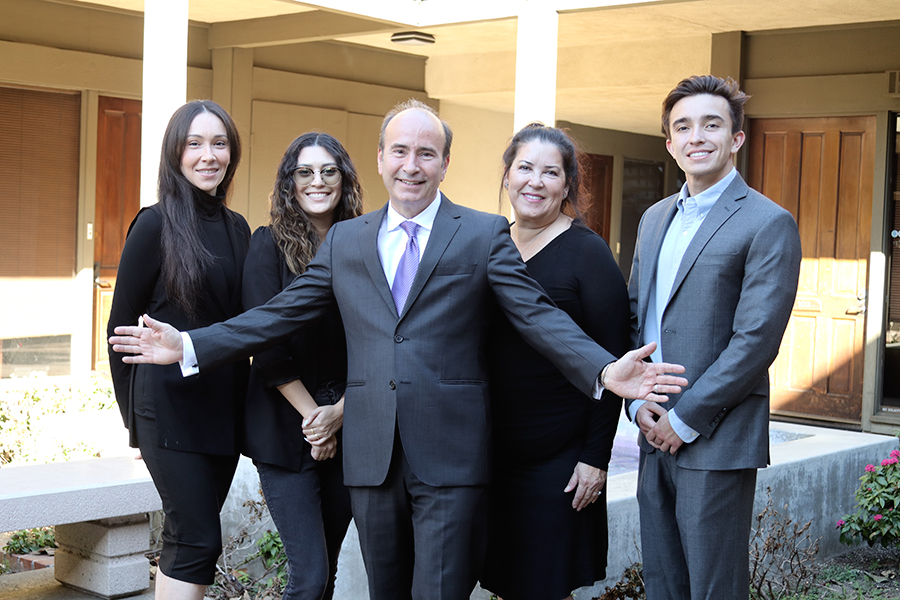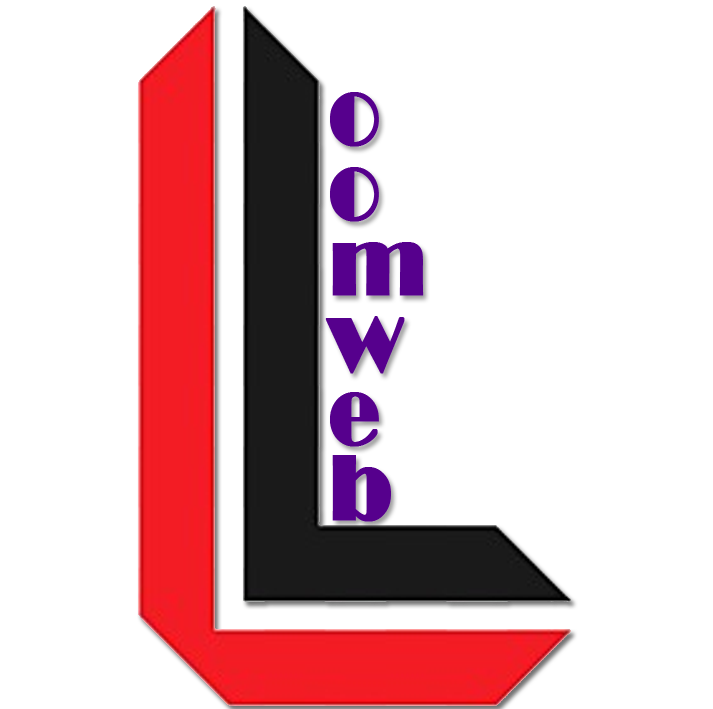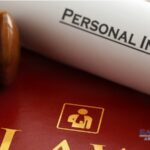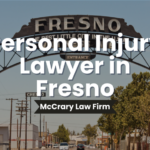Orange County Personal Injury Lawyer: Navigating the complex legal landscape of Orange County, California, requires expert guidance. This guide delves into the intricacies of personal injury law, from initial client acquisition strategies to successful trial preparation and ethical considerations. We explore the competitive market, prevalent case types, and effective methods for achieving favorable outcomes for clients.
Understanding the specific challenges and opportunities within Orange County’s legal system is crucial for success. This includes a deep understanding of local regulations, prevalent injury types (e.g., car accidents, medical malpractice), and the most effective strategies for client communication and case management. This comprehensive overview aims to provide a practical roadmap for navigating the complexities of personal injury law in this dynamic region.
Client Acquisition Strategies
Attracting personal injury clients in a competitive market like Orange County requires a multi-faceted approach. Effective marketing strategies must leverage both online and offline channels to reach potential clients effectively and build a strong brand reputation. This involves careful consideration of target demographics, preferred communication methods, and the unique needs of individuals facing personal injury claims.
Effective marketing strategies for attracting personal injury clients in Orange County should focus on building trust and demonstrating expertise. This requires a consistent brand message across all platforms and a commitment to providing valuable, informative content. Simply advertising services is not enough; potential clients need to understand the value proposition and the lawyer’s ability to deliver results.
Targeted Social Media Campaigns
A successful social media campaign in Orange County should utilize platforms like Facebook, Instagram, and potentially even TikTok, depending on the target demographic. The campaign should focus on creating engaging content that addresses the concerns and questions of potential clients. This could include short videos explaining common personal injury scenarios (car accidents, slip and falls, medical malpractice), infographics detailing the legal process, and testimonials from satisfied clients. Paid advertising on these platforms, targeting specific demographics (age, location, interests) within Orange County, is crucial for maximizing reach and engagement. For example, a Facebook ad could target individuals aged 25-55 in specific Orange County zip codes who have shown an interest in car safety or local news. Instagram could showcase visually appealing content, such as before-and-after photos of accident repairs or graphics illustrating compensation amounts in similar cases.
Compelling Website Design
A well-designed website is essential for attracting and converting potential clients. The website should be mobile-responsive, visually appealing, and easy to navigate. Crucially, it needs to clearly communicate the lawyer’s expertise, experience, and commitment to client success. A prominent call-to-action (CTA) – such as a “Free Consultation” button – should be visible on every page. The website should include sections detailing the lawyer’s areas of expertise (e.g., car accidents, motorcycle accidents, wrongful death), client testimonials, and a blog featuring informative articles on personal injury law. High-quality images and videos can also enhance the website’s appeal and build trust. For example, a homepage could feature a professional headshot of the lawyer, accompanied by a brief, impactful statement summarizing their experience and commitment to their clients. An “About Us” page would provide more detail on the lawyer’s background and qualifications. Case studies showcasing successful outcomes could be presented to demonstrate the lawyer’s capabilities and build confidence in their ability to handle similar cases.
Legal Procedures and Documentation

Navigating the legal landscape after a personal injury accident in Orange County can be complex. Understanding the standard procedures and the importance of meticulous documentation is crucial for a successful claim. This section Artikels the key steps involved in filing a lawsuit and preserving evidence, along with a checklist of essential legal documents.
Filing a personal injury lawsuit in Orange County involves a series of steps, beginning with the initial consultation with an attorney. This is followed by the filing of a complaint, the defendant’s response, discovery, and potentially, settlement negotiations or trial. The timeline for each stage varies depending on the specifics of the case and the court’s schedule.
Filing a Personal Injury Lawsuit in Orange County
The process begins with the preparation and filing of a complaint with the Orange County Superior Court. This document formally Artikels the plaintiff’s claims against the defendant, detailing the injuries sustained, the alleged negligence, and the damages sought. The defendant then has a specific timeframe to file an answer, either admitting or denying the allegations. After the pleadings are filed, the discovery phase commences, where both sides exchange information through interrogatories, depositions, and requests for documents. This phase aims to gather all relevant evidence before the case proceeds to trial or settlement. Failure to adhere to the court’s deadlines can result in sanctions. For instance, a late filing might lead to dismissal of the claim or other penalties.
Gathering and Preserving Evidence in Personal Injury Cases
Effective evidence gathering is paramount to a successful personal injury claim. This involves documenting the accident scene, medical records, witness statements, and any other relevant information. Preservation of evidence is equally important; failure to do so could weaken or even invalidate a claim. Examples of crucial evidence include photographs of the accident scene showing damage to vehicles or property, police reports documenting the incident, medical bills and records detailing the extent of injuries, and statements from witnesses who observed the accident. Properly preserving this evidence, such as storing photos securely and keeping accurate records, is vital.
Necessary Legal Documents Checklist, Orange county personal injury lawyer
A comprehensive collection of documents is essential for a strong personal injury case. This checklist serves as a guide, but the specific documents required will vary depending on the circumstances of the accident.
- Accident Report (Police Report)
- Medical Records (Doctor’s notes, hospital records, therapy records)
- Photographs and Videos of the accident scene and injuries
- Witness Statements (Contact information and written statements)
- Insurance Information (Your policy and the at-fault party’s policy)
- Employment Records (Documentation of lost wages)
- Repair Bills (For damaged property)
- Pay stubs (showing lost income)
- Bank Statements (for proof of financial hardship)
Trial Preparation and Litigation: Orange County Personal Injury Lawyer

Preparing for a personal injury trial is a meticulous process demanding careful planning and execution. Success hinges on a thorough understanding of the case, meticulous organization of evidence, and a compelling presentation to the jury. This involves a multi-faceted approach encompassing legal strategy, witness preparation, and a robust understanding of courtroom procedures.
Steps Involved in Preparing for a Personal Injury Trial
Trial preparation begins long before the trial date. It involves a systematic approach, building upon the groundwork laid during the investigation and discovery phases. Key steps include: thorough review of all evidence gathered, including medical records, police reports, and witness statements; development of a comprehensive trial strategy, outlining the legal arguments and evidence to be presented; preparation of witnesses through mock trials and practice testimony; and careful selection of the jury through voir dire. Finally, the preparation of exhibits and visual aids, such as charts and timelines, is crucial for effectively communicating complex information to the jury. A detailed trial notebook, acting as a centralized repository for all aspects of the case, is invaluable for maintaining organization and efficiency throughout the trial.
Strategies for Presenting Evidence Effectively in Court
Presenting evidence effectively requires more than simply introducing documents and calling witnesses. It demands a strategic approach designed to persuade the jury of the client’s case. Strategies include: organizing evidence logically, presenting the strongest evidence first, and using visual aids to enhance comprehension. Witness testimony should be carefully choreographed, with leading questions used judiciously to elicit concise and compelling responses. Expert witnesses play a critical role, providing credible and persuasive testimony on complex medical or technical issues. The effective use of demonstrative evidence, such as photographs, videos, and models, can significantly enhance the jury’s understanding of the case. Finally, maintaining a calm and professional demeanor throughout the trial is essential to building credibility and trust with the jury.
Examples of Effective Opening and Closing Statements
Opening and closing statements are crucial for setting the tone and framing the narrative of the case. An effective opening statement should clearly and concisely summarize the facts of the case, outlining the injuries sustained and the defendant’s liability. For example, an opening statement might begin: “Ladies and gentlemen of the jury, we are here today because of the negligence of [Defendant’s Name], which resulted in severe injuries to our client, [Client’s Name].” The statement would then proceed to Artikel the key facts supporting the claim. The closing statement should reiterate the key points of the case, emphasizing the evidence presented and rebutting the defendant’s arguments. For example, a closing statement might conclude: “The evidence clearly demonstrates that [Defendant’s Name] was negligent, and their actions directly caused [Client’s Name]’s injuries. We ask you to find in favor of our client and award them the damages they deserve to compensate them for their pain, suffering, and lost wages.” Both statements should be concise, persuasive, and emotionally resonant, connecting with the jury on a human level.
Financial Aspects of the Practice
The financial health of a personal injury law firm is paramount to its long-term success and ability to effectively serve its clients. Understanding and managing the various costs, implementing effective financial strategies, and establishing a clear pricing model are crucial for profitability and sustainability. This section will explore these key aspects.
Typical Costs Associated with Running a Personal Injury Law Firm
Operating a personal injury law firm involves a range of expenses. Careful budgeting and tracking of these costs are essential for maintaining profitability and financial stability. These expenses can be broadly categorized into fixed and variable costs.
- Fixed Costs: These are consistent monthly expenses regardless of the firm’s caseload. Examples include rent or mortgage payments for office space, salaries for permanent staff (including paralegals and administrative assistants), professional liability insurance (malpractice insurance), software subscriptions (legal research databases, case management software), and utilities.
- Variable Costs: These expenses fluctuate depending on the firm’s activity and caseload. Examples include marketing and advertising costs (online ads, print advertising, networking events), costs associated with expert witnesses, court filing fees, copying and printing expenses, and outside services (e.g., medical record retrieval, investigative services).
Strategies for Managing Firm Finances Effectively
Effective financial management is crucial for a law firm’s success. Implementing robust strategies ensures the firm remains financially sound and can weather economic fluctuations.
- Detailed Budgeting and Forecasting: Creating a comprehensive budget that accounts for both fixed and variable costs is fundamental. Regularly reviewing and updating the budget based on actual expenses and caseload allows for proactive adjustments.
- Time Management and Billing Efficiency: Tracking attorney and staff time meticulously is crucial for accurate billing and identifying areas for improved efficiency. Implementing time management software and streamlining billing processes can significantly impact profitability.
- Cash Flow Management: Maintaining a healthy cash flow is vital. This involves careful monitoring of accounts receivable (money owed to the firm), managing accounts payable (money owed by the firm), and securing adequate lines of credit if needed.
- Regular Financial Reporting and Analysis: Regularly reviewing financial statements (profit and loss statements, balance sheets, cash flow statements) provides insights into the firm’s financial health. This allows for timely identification of potential problems and opportunities for improvement.
Methods for Pricing Legal Services
Determining appropriate fees for legal services is a critical aspect of financial management. Several methods exist, each with its own advantages and disadvantages.
- Hourly Rates: This traditional method involves charging clients an hourly rate for an attorney’s and staff’s time. It provides transparency but can be unpredictable in terms of total cost for the client.
- Contingency Fees: In personal injury cases, a common approach is to charge a contingency fee, where the attorney receives a percentage of the client’s settlement or judgment. This aligns the attorney’s interests with the client’s, but it also involves a higher degree of risk for the attorney.
- Flat Fees: For simpler cases with predictable scope of work, a flat fee can be offered. This provides certainty for both the client and the attorney but requires careful estimation of the time and resources needed.
- Value-Based Pricing: This approach focuses on the value delivered to the client rather than simply the time spent. It involves considering the potential outcome and the client’s needs to determine an appropriate fee.
Continuing Legal Education

Continuing legal education (CLE) is paramount for personal injury lawyers in Orange County, ensuring they remain proficient in an ever-evolving legal landscape. Staying current with changes in laws, case precedents, and best practices is crucial for providing effective representation and achieving optimal results for clients. Failure to do so can lead to malpractice claims and ultimately, jeopardize a law firm’s reputation and success.
Key Areas of Continuing Legal Education for Personal Injury Lawyers
Several key areas within personal injury law require consistent updating through CLE. These areas are essential for maintaining competency and providing clients with the best possible legal representation. Neglecting any of these could severely impact the effectiveness of legal strategies and outcomes.
- Tort Law Updates: Changes in state and federal tort laws, including modifications to negligence principles, comparative fault rules, and statutes of limitations, are critical. These changes directly impact the viability of personal injury claims.
- Medical Malpractice Law: Understanding medical malpractice principles, expert witness requirements, and the intricacies of medical records is vital for cases involving medical negligence. The nuances of medical terminology and procedures are particularly important.
- Insurance Law: Knowledge of insurance policies, coverage disputes, and bad faith claims is crucial for effectively negotiating settlements and pursuing litigation against insurance companies.
- Civil Procedure: Staying abreast of procedural rules, including discovery processes, motions practice, and trial techniques, is essential for efficient and effective case management.
- Evidence Law: A thorough understanding of evidence admissibility rules, including the presentation of medical records, expert testimony, and other forms of evidence, is crucial for building strong cases.
- Trial Techniques and Advocacy: Improving skills in courtroom advocacy, including opening statements, cross-examination, and closing arguments, is vital for success in litigation. CLE courses often provide mock trial experiences and feedback.
- Ethics and Professional Responsibility: Staying updated on ethical rules and professional responsibilities is essential for maintaining a high standard of legal practice and avoiding disciplinary actions.
Resources for Staying Updated on Legal Changes and Best Practices
Numerous resources are available to personal injury lawyers seeking to stay informed about legal changes and best practices. Utilizing a combination of these resources ensures comprehensive coverage and access to diverse perspectives.
- State Bar Associations: The California State Bar provides CLE courses, publications, and online resources specific to California law. They often offer specialized personal injury CLEs.
- Legal Publications and Journals: Publications such as the American Bar Association Journal, and various state-specific legal journals offer articles and analysis on current legal issues.
- Legal News Websites and Blogs: Many online resources provide up-to-date news and commentary on legal developments, offering insights into recent case law and legislative changes.
- Seminars and Conferences: Attending legal seminars and conferences allows for networking and learning from experts in the field. These events frequently cover specialized topics within personal injury law.
- Online CLE Providers: Numerous online platforms offer convenient and flexible access to CLE courses, often catering to specific practice areas like personal injury law.
Sample Continuing Education Plan for a Personal Injury Lawyer
A well-structured CLE plan ensures continuous professional development. This example provides a framework, which should be tailored to individual needs and practice focus.
| Month | CLE Topic | Resource | Hours |
|---|---|---|---|
| January | Recent Developments in California Tort Law | California State Bar | 6 |
| March | Advanced Trial Techniques | National Trial Lawyers College | 8 |
| May | Medical Malpractice Update | Online CLE Provider | 4 |
| July | Insurance Bad Faith Litigation | ABA Seminar | 12 |
| September | Ethical Considerations in Personal Injury Cases | State Bar Association | 4 |
| November | Advanced Deposition Skills | Local Bar Association Workshop | 6 |
Successfully representing clients in Orange County personal injury cases demands a multifaceted approach. From employing sophisticated marketing techniques to mastering the art of negotiation and trial preparation, a well-rounded strategy is essential. By understanding the local legal nuances, prioritizing ethical conduct, and leveraging technology effectively, personal injury lawyers can build thriving practices and secure positive outcomes for their clients. This detailed exploration provides a foundation for continued success in this demanding yet rewarding field.
Finding the right Orange County personal injury lawyer can be crucial after an accident. For those whose injuries occurred closer to Los Angeles, seeking a la personal injury lawyer might be a more practical option. Ultimately, selecting a lawyer with experience handling similar cases in your specific location within Southern California is key to a successful outcome.
Orange County residents should prioritize local expertise for navigating the unique legal landscape of the area.
Finding the right Orange County personal injury lawyer can be crucial after an accident. If you’ve been involved in a serious incident, understanding your legal options is paramount; a helpful resource for navigating this process is the information available at lawyer injury accident. This knowledge empowers you to make informed decisions when selecting an Orange County personal injury lawyer to best represent your interests.
Finding the right Orange County personal injury lawyer can significantly impact your case’s outcome. The search often leads individuals to seek out a “personal injury lawyer Orange County CA,” and a great resource for this is the comprehensive directory found at personal injury lawyer orange county ca. Ultimately, selecting a skilled Orange County personal injury lawyer requires careful consideration of experience and client testimonials.




